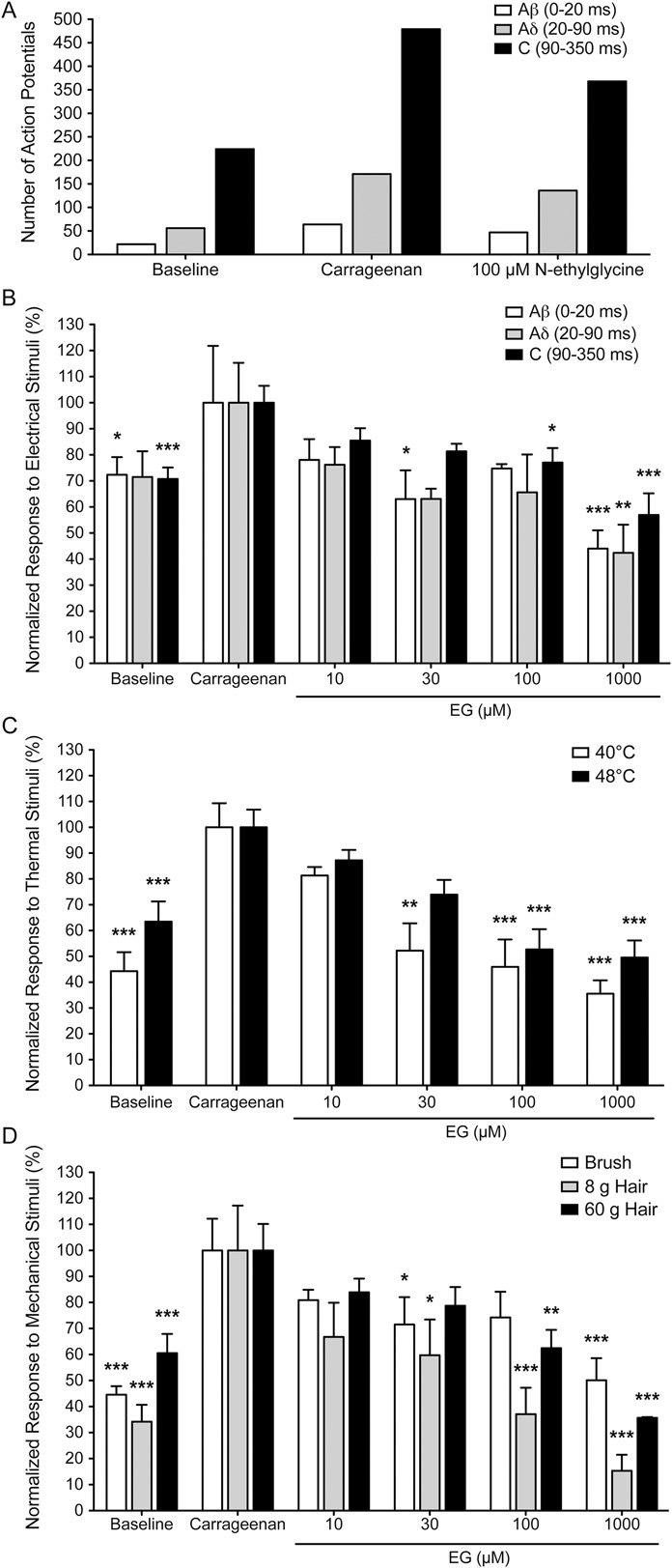Figure 8.

N-ethylglycine (EG) reduces wide-dynamic-range neuron response in inflammatory pain. Action potentials of single neurons in response to electrical stimulation (A/B), thermal stimulation (C) or mechanical stimulation (D) of the receptive field were recorded. Responses evoked by Aβ, Aδ, and C fibers after electrical stimuli were superimposed and separated according to latency (0-20, 20-90, and 90-350 milliseconds, respectively). Representative data from one individual neuron recording (A) demonstrating that the majority of action potentials are elicited by C-fiber input after electrical stimulation. (B-D), Relative number of action potentials elicited by the indicated fiber inputs, with the respective number recorded after carrageenan treatment set to 100%. Thermal stimuli were applied by means of a constant water jet at 40°C and 48°C. Mechanical stimuli were applied with a fine brush or von Frey hairs (8 and 60g force). Inflammatory pain was induced in adult rats by injection of carrageenan (1%, 20 μL) at the left hind paw. EG was applied intrathecally after hyperexcitability had developed 3 hours after carrageenan application. Effect of EG on neuronal response to stimuli was tested 30 minutes after application. (B-D), Data are expressed as mean ± SEM; n = 8 for controls and n = 4 for each concentration of EG; *P < 0.05, **P < 0.01 and ***P < 0.001 vs neuronal response after carrageenan application; 1-way repeated-measures analysis of variance and Bonferroni post hoc test.
